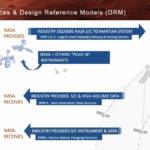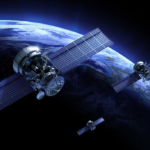HELSINKI — China’s Shenzhou-17 crew returned to Earth Tuesday following six months aboard the Tiangong space station.
Astronauts Tang Hongbo, Tang Shengjie and Jiang Xinlin had been operating the Tiangong space station since October. The crew departed the station at 8:43 p.m. Eastern April 29 (0043 UTC on April 30) and landed at Dongfeng landing site in Inner Mongolia Autonomous Region near Jiuquan spaceport at 5:46 a.m. Eastern (0946 UTC) April 30.
Recovery crews were on the scene moments after the return capsule touched down. Commander Tang Hongbo was first out of the capsule. “I feel so proud for my country. I departed in autumn and came back in spring and I feel I have experienced the most beautiful seasons,” Tang said.
“Flying for over 180 days in the space station, I finished all the tasks, but at the same time, I miss my home everytime I fly over my homeland.”
Shenzhou-17 launched Oct. 25 Eastern, 2023, taking over control of Tiangong from the outgoing Shenzhou-16 crew days later. Tang Hongbo and his colleagues welcomed the incoming Shenzhou-18 crew aboard Tiangong April 25.
The two crews participated in a handover ceremony April 28. Tang handed over the hatch key as a symbolic handing of the baton to Shenzhou-18 mission commander Ye Guangfu.
The Shenzhou-17 crew embarked on two spacewalks to conduct repair and maintenance work on the station’s solar arrays. The panels had suffered damage from micrometeoroid strikes.
The trio also oversaw the arrival of the Tianzhou-7 cargo resupply mission in January. The astronauts also sent live lunar new year’s greetings to television viewers on Earth and participated in electroencephalogram (EEG) tests, which focused on the human brain in space.
They return having conducted 84 in-orbit experiments with more than 200 samples produced, according to China Central Television (CCTV), and have brought back over 400 material samples retrieved after being exposed to space outside the Wentian experiment module.
The Shenzhou-18 crew will carry out more than 90 experiments aboard Tiangong. They will conduct two to three extravehicular activities and six cargo outbound deliveries via the station’s cargo airlock during their six-month-long mission.
Shenzhou-17 was the sixth crew to visit Tiangong. While crewed missions and handovers have apparently become routine for China, the country is advancing its human spaceflight ambitions.
China is close to selecting a fourth batch of astronauts which will be trained to travel to, and work aboard, Tiangong. The new batch may also be involved in training for China’s crewed lunar plans.
China approved its space station plan in 1992 and began building the three-module, T-shaped low Earth orbit outpost in 2021.
China is preparing to expand Tiangong in the coming years. The first move will be sending a multi-functional expansion module with six docking ports to the orbital outpost. This expansion could allow for greater possibilities for international, tourist and commercial visits without disrupting core operations.
Related
Author Profile
- Space.com is an online publication focused on space exploration, astronomy, skywatching and entertainment, with editorial teams based in the United States and United Kingdom
Latest entries
 ScienceMay 12, 2024National Space Council will explore military space and intelligence roles and responsibilities
ScienceMay 12, 2024National Space Council will explore military space and intelligence roles and responsibilities ScienceMay 5, 2024NASA awards studies for commercial Mars missions
ScienceMay 5, 2024NASA awards studies for commercial Mars missions ScienceMay 4, 2024Air Force project blends military and commercial space networks
ScienceMay 4, 2024Air Force project blends military and commercial space networks ScienceMay 4, 2024Nelson lobbies Congress to fund ISS deorbit vehicle in supplemental spending bill
ScienceMay 4, 2024Nelson lobbies Congress to fund ISS deorbit vehicle in supplemental spending bill

